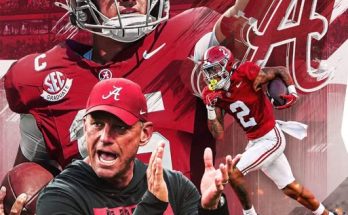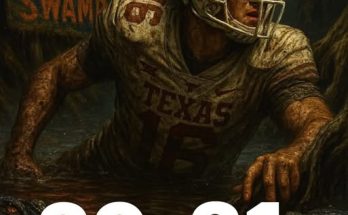The 1966 Alabama Crimson Tide football team stands as one of the greatest squads in college football history never to win a national championship. Under the leadership of legendary coach Paul “Bear” Bryant, Alabama finished the season with a perfect 11-0 record, capped off by a dominant 34-7 victory over Nebraska in the Sugar Bowl. Yet despite their flawless performance on the field and back-to-back national titles in 1964 and 1965, the Crimson Tide were denied the opportunity to claim a third consecutive crown. The events of that season remain one of the most controversial chapters in college football lore—an instance where politics, public perception, and the socio-cultural climate arguably played as big a role as points scored and games won.
The Crimson Tide entered the 1966 season as the defending national champions, riding high from their 1965 success, where they were named national champions despite a midseason loss, thanks to a strong finish and help from other top teams losing late in the year. With a roster packed with talent and discipline, Alabama looked every bit the juggernaut once again. The team was led by quarterback Kenny Stabler, nicknamed “The Snake,” a fiercely competitive leader with a flair for making plays when it mattered most. Running backs like Dennis Homan and fullback Les Kelley helped power an offense that was methodical and brutal. The defense was a hallmark of Bear Bryant’s philosophy—tough, disciplined, and unrelenting.
Week after week, Alabama rolled through its Southeastern Conference schedule. They shut out four opponents, allowed just 44 points all season, and never gave up more than 14 in a single game. They beat powerhouses like Tennessee and Auburn, claimed the SEC title, and made it clear they were one of the most complete teams in the nation. In any other year, an undefeated, defending national champion team with such dominance would be the presumptive favorite to repeat. But 1966 was no ordinary year in college football—or in America.
The story of Alabama’s snub cannot be told without looking at the emergence of two Northern powerhouses: Notre Dame and Michigan State. Both teams entered the season highly ranked and both quickly became darlings of the national media. Michigan State, coached by Duffy Daugherty, had a roster filled with future NFL stars, many of whom were among the first wave of Black players recruited to play major college football at predominately white institutions. Notre Dame, led by the stoic Ara Parseghian, had long been a national favorite. Both programs were seen as representatives of progress and change—both on the field and off.
As the season progressed, Notre Dame and Michigan State kept winning and quickly climbed the rankings. Their November 19 matchup in East Lansing became one of the most anticipated games in college football history. Dubbed the “Game of the Century,” it pitted the No. 1 Fighting Irish against the No. 2 Spartans in a battle for supremacy. The result? A 10-10 tie. Notre Dame, playing without starting quarterback Terry Hanratty for most of the game, chose to run out the clock rather than risk a turnover late, securing the tie and preserving its No. 1 ranking.
The media’s reaction to the game was overwhelmingly positive toward Notre Dame’s strategy and character. Parseghian was hailed for his decision, and the narrative quickly solidified that Notre Dame was the best team in the country, even without a win against their toughest opponent. Meanwhile, Alabama—who had been dominating opponents weekly—sat at No. 3, seemingly forgotten. Despite their unblemished record, the Crimson Tide were left looking in from the outside, wondering what more they could have done.
When the final AP and UPI polls were released following the regular season—before bowl games counted toward national championships—Notre Dame was crowned the national champion. Michigan State held steady at No. 2. Alabama, despite its perfect record and overwhelming victories, remained stuck at No. 3. Their Sugar Bowl win against Nebraska would not change the outcome. The title had already been decided.
The exclusion of Alabama ignited a firestorm of criticism in the South and among college football purists. How could a team that had not lost a single game in three seasons, a team that had proven itself time and again, be denied a chance to defend its crown? Theories abounded, and many centered around one uncomfortable truth—race. In 1966, Alabama was still a segregated football team. Despite the changing tides in other parts of the country, Bear Bryant’s team remained all white, a reality that stood in stark contrast to the integrated rosters of Notre Dame and Michigan State. While Bryant would eventually break the color barrier in Alabama football, the Tide’s racial composition in 1966 was seen by some as a factor in their being overlooked.
Others pointed to media bias. Notre Dame, with its national following, Catholic identity, and academic prestige, was always a media darling. Michigan State’s groundbreaking roster and gritty play had won over much of the Northern press. Alabama, with its association with George Wallace-era segregation and Southern defiance, was not seen as the sympathetic choice. Even though Alabama had won national titles in 1964 and 1965, the controversy surrounding the selection processes in those years may have contributed to a hesitancy to award them a third. It was as though the pollsters were ready to anoint someone new—regardless of the actual results on the field.


